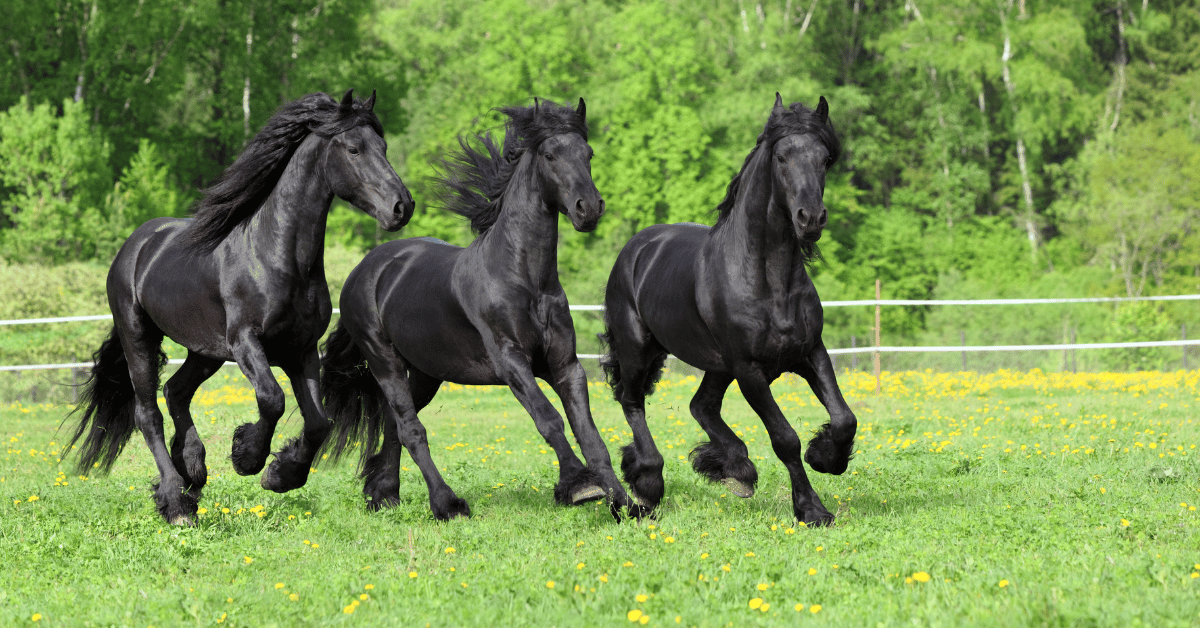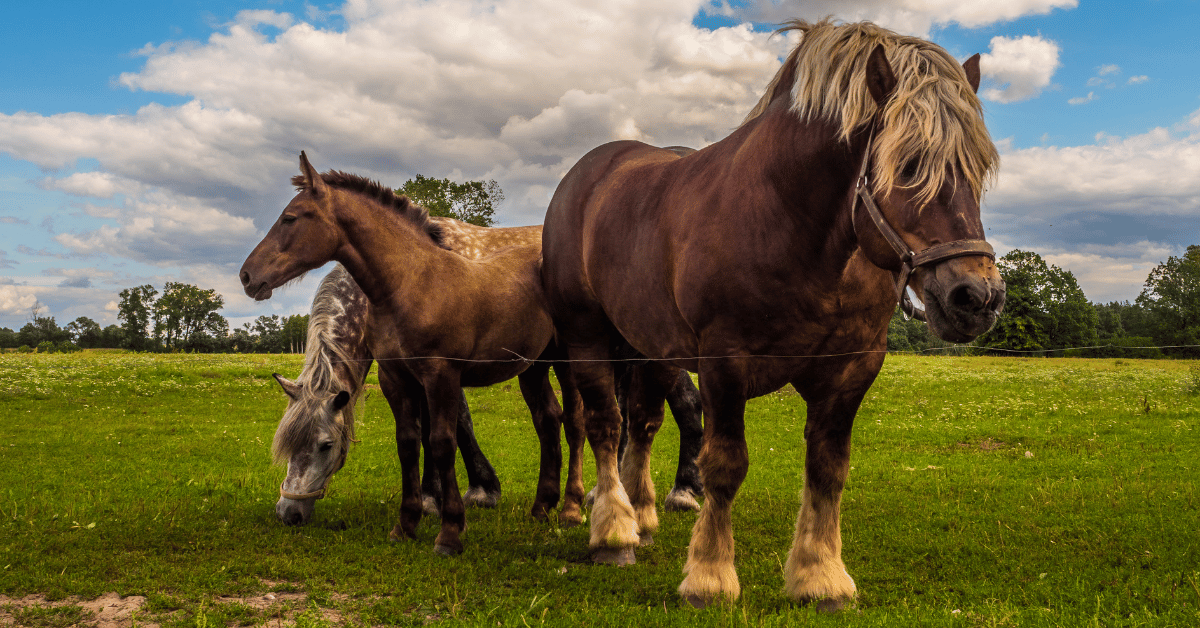Different Types of Mites in Horses – and What You Can Do About Them
Mites are pesky parasites that cause itching and skin irritation in horses. In feathered breeds, a mite infestation can even lead to Chronic Progressive Lymphedema (CPL). That’s why it’s important to control mites effectively. But what kinds of mites are there, and how do they differ?
Mites

23 October '25 • 3 min reading time
Several types of mites can be found in horses. The main families seen in Europe are Chorioptes, Sarcoptes, and Psoroptes. These mites affect different parts of the body and burrow into the outer skin layer, feeding on skin flakes.
Chorioptes – the leg mite
Chorioptes mites are commonly known as leg mites. Historically, different subtypes were named after their host species — Chorioptes bovis for cattle, Chorioptes equi for horses, Chorioptes ovis for sheep, and Chorioptes caprae for goats. It was once thought that cross-species infection was impossible. However, research has shown that these mites are morphologically identical and can survive on multiple hosts. Today, they are usually referred to collectively as Chorioptes bovis, although equine vets often still use Chorioptes equi. These mites are especially common in breeds with heavy feathering, such as Friesians, Tinkers, and draft horses. They thrive in warm, moist feathered areas, especially around the fetlocks and pasterns. Typical signs include stamping, rubbing the legs together, or scratching the tail against walls. You may notice scabs and flakes on the lower legs — often mistaken for “mud fever.” However, regular creams won’t help if mites are the cause. To confirm a diagnosis, your vet can take a skin scraping and check it under a microscope.
Other mange mites
Other mite species found in horses belong to the Sarcoptes and Psoroptes families. Sarcoptes mites usually affect the face, while Psoroptes are more common on the back and flanks. The latter are sometimes seen in cattle, often together with Chorioptes mites. Sarcoptes mites are relatively rare in northern Europe. In a Belgian study of draft horses with CPL, almost all infestations were due solely to Chorioptes bovis, with no other species present.
Life cycle
All mange mites reproduce quickly. A female lays numerous eggs, which develop into adults within 7–10 days. The eggs can survive for long periods — on the horse, in bedding, or on grooming equipment. That’s why multiple treatments are usually needed to break the cycle. There are only a few effective products available, and most are strong, chemical-based treatments. In severe cases, veterinary-prescribed washes are necessary — typically three treatments at ten-day intervals, starting at the tail and moving downward. If you start at the bottom, mites will simply crawl upward and return later.
Prevention is best
Because treatment can be difficult, prevention is crucial. Keep the feathers clean — or clip them, at least in the pastern area and along the front of the legs. You can leave a triangular tuft at the back for appearance. Preventive sprays containing herbs, beneficial bacteria, or silicone (which makes the hair too slippery for mites) can also help. Feeding herbal blends that make the horse’s blood less appealing to parasites is another option. Herbs such as fenugreek, echinacea, astragalus, gentian, thyme, and citronella are effective and also support healthy skin.
Red mites (poultry mites)
If horses are kept near chickens, red poultry mites (Dermanyssus gallinae) can sometimes appear. These mites are nocturnal and hide in cracks during the day, so a vet may not detect them during a daytime examination.
Transmission
Mites spread through direct horse-to-horse contact or via shared items such as brushes, rugs, tack, or stable walls. They can survive for weeks in the environment, and their eggs for months in a dormant state.Mites particularly like feathered legs or already irritated skin. Mite infestations are sometimes confused with lice, but lice are visible to the naked eye and tend to live on the neck and body. Another common confusion is rain scald, a bacterial skin condition that looks similar but is not caused by mites and requires different treatment.
Sources
Brys M, Claerebout E, Saey V, Chiers K. High prevalence of Chorioptes bovis: an important factor in chronic progressive lymphedema in Belgian draft horses. Veterinary Research Communications. 2025 Mar;49(3):129. DOI: 10.1007/s11259-025-10695-y. PMID: 40042772; PMCID: PMC11882615. https://europepmc.org/article/MED/40042772
Paardendokters.nl
https://edepot.wur.nl/119781
De specificiteit van de chorioptes bovis mijt voor het Belgische Trekpaard https://libstore.ugent.be/fulltxt/RUG01/003/145/124/RUG01-003145124_2023_0001_AC.pdf


